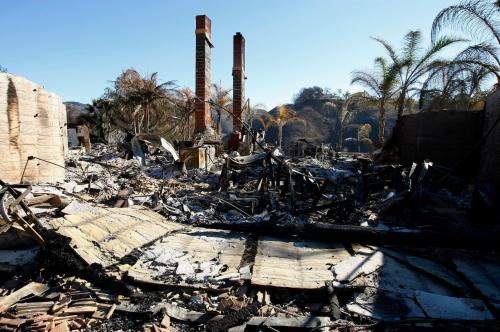Commentators and pundits often lampoon the number of consecutive presidents (dating back to Nixon) that have promised ending dependency on oil. In June 2010, President Barack Obama joined his predecessors when, at the peak of the firestorm surrounding the Macondo oil leak in the Gulf of Mexico, he addressed the nation from the Oval Office on the perils of the United States’ dependency on oil. Unfortunately, his speech failed to address the problem, instead offering platitudes that had little prospect of achieving his goal. Consistent with most of the administration’s energy rhetoric until Wednesday, the president continued to link oil independence with the need to increase solar, wind and other renewable energy resources, apparently unmindful that these resources, which are used mainly in the generation of electricity, can do nothing in the near term to remove the transportation sector’s near total dependence on oil.
However, in Wednesday’s speech at Georgetown University, the president brought some much-needed pragmatism to the discussion. He laid the cornerstone for a measured energy policy that can help provide long-term energy security while at the same time minimizing carbon emissions (as much as politically feasibly possible) and supporting the American economy.
The president was practical in his assessment of oil markets, the reasons for the recent run up in gasoline prices, and in his inability to offer any short term palliatives, noting that extra production in the United States, which has just 2 percent of proven oil reserves, will have little impact on the global market. Moreover, he correctly explained that the country will be dependent on oil for the near future. Oil drives the majority of our transportation fleet, and today there are no immediate, large-scale alternatives. To that end, he announced his intention to implement what is his only politically palatable short-term policy option: increasing the vehicle fuel-efficiency standards. (Although, he continues to fail to support an increase in the gasoline tax. While such a proposal would be politically difficult—particularly with an election looming—such an action would be valuable for deficit reduction and would send a clear message to the marketplace, automotive manufactures, and entrepreneurs that the nation is serious about changing the status quo and about moving to a an alternative transportation fleet.)
The president acknowledged that in the mid- to long-term, the country’s options are a little more open. With an improvement in the natural gas fueling infrastructure, more heavy-duty vehicles (i.e. trucks and buses), and possibly even passenger vehicles, can run on clean burning, abundant natural gas. Likewise, with more electric recharging stations and continued improvement in battery technologies, electric vehicles will further penetrate the automotive fleet. While the initial impact may be marginal—achieving the president’s target of 1 million electric vehicles by 2015 will be remarkable, but insignificant next to the 260 million vehicles already on the road—it nevertheless represents a laudable, realistic first step in curbing oil consumption while helping to achieve his goal of reducing oil imports by one-third by 2025.
After linking electric vehicles with clean electricity and the potential for renewables, the president then highlighted a second objective that should resound with energy planners around the world. By saying he supports a nuclear industry that is guided by rigorous, independent regulation and stringent safety standards, he acknowledged a fact that has been largely ignored in the wake of the Fukushima nuclear crisis in Japan: an abandonment of nuclear energy will likely end hopes for climate change mitigation. Although it accounts for just 14 percent of world electricity, nuclear energy is the only large-scale, readily available, zero-carbon source of power. While high-costs deter utilities from building nuclear power plants in the United States, such an announcement should buttress any lingering “renaissance” elsewhere in the world.
His speech certainly wasn’t perfect. There will still be anger from both political wings regarding his policy on offshore drilling: one side will argue that he is conceding too much, the other will be fighting for more and faster permitting (especially in the Gulf of Mexico). And, in a larger context, the vision he explained on Wednesday will have to be translated into tangible policy. Given Capitol Hill’s recent track record, this will undoubtedly be difficult, and potentially ugly. But the president’s new pragmatic tone may be able to bring warring parties back to the center. If so, maybe the United States can gradually (very gradually) change the energy policy discussion that has been on repeat for the past six presidential administrations.
The Brookings Institution is committed to quality, independence, and impact.
We are supported by a diverse array of funders. In line with our values and policies, each Brookings publication represents the sole views of its author(s).



Commentary
Obama’s Pragmatic Plan for Energy Security
March 31, 2011